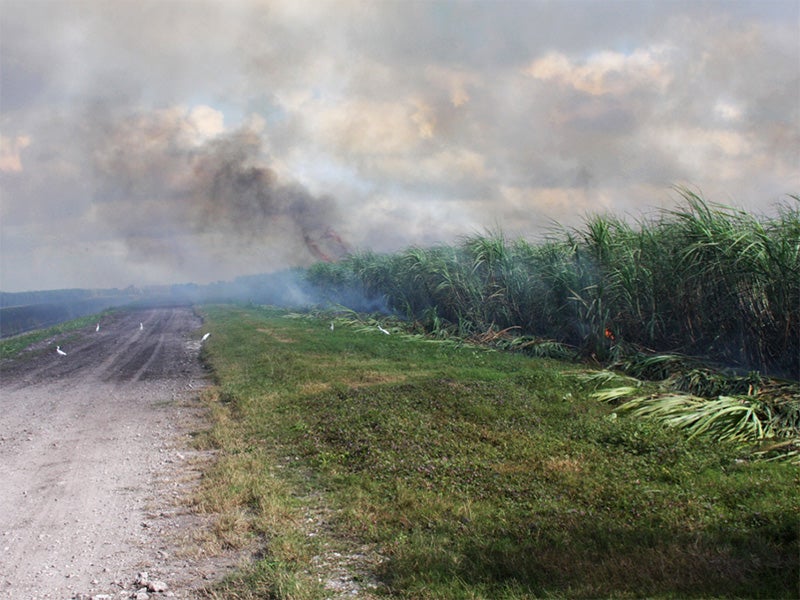Conservation Groups File Action to Curb Pollution from Burning Sugar Cane Fields
South Florida cane burning emits over 2,800 tons of hazardous air pollutants annually
Contact
On behalf of the Sierra Club, Earthjustice filed a legal action today asking the U.S. Environmental Protection Agency to regulate smoke pollution coming from thousands of acres of sugar cane that U.S. Sugar Corp. burns in South Florida each year. Burning the cane causes hazardous air pollution that poses a health risk to people.
Glades, Hendry and Palm Beach counties are located in South Florida.
The petition asks the EPA to veto a permit that the Florida Department of Environmental Protection issued to U.S. Sugar. The permit should be vetoed because it only regulates the smokestacks at a sugar refinery industrial plant, but doesn’t regulate the clouds of billowing black smoke coming off 150,000 acres of burning sugar cane each year.
“People living in these communities have to breathe hazardous, black smoke. There’s a foul odor in the air and ash raining down. It’s not right, and that’s why we are challenging the permit,” said Frank Jackalone, Florida Organizing Manager for the Sierra Club. “Burning sugar cane fields is an outdated practice that should be stopped. People living in South Florida have the right to breathe clean air, and allowing this company to conduct open burning on thousands of acres without Clean Air Act regulation is both unfair and unsafe.”
Records show that sugar cane burning in Glades, Hendry and Palm Beach counties emits over 2,800 tons of hazardous air pollutants per year. The burning accounts for 86 percent of Palm Beach County’s emissions of formaldehyde, a probable carcinogen, and 69 percent of emissions of toxic acenaphthylene, a pollutant linked to genetic mutations and cancer.
Sugar growers burn fields to remove excess leaves around cane stalks before harvesting. In some parts of Brazil and Australia, sugar growers have shifted to a greener approach; they cut away the leafy parts of sugar cane and use it to mulch fields. Sugar growers could also use the leafy cuttings as biofuel in processing plants that (unlike the open fields) have pollution control equipment.
“We believe that allowing these powerful multi-national corporations to do open burning, forcing people to breathe their toxic smoke, is a throwback to the past. We know more about this air pollution now, and what we know is alarming,” said Earthjustice Florida Managing Attorney David Guest. “The pollution spreads east and west to both Florida coasts, but the heaviest impacts fall on the low-income sugar-farming communities around Lake Okeechobee.”

Additional Resources
About Earthjustice
Earthjustice is the premier nonprofit environmental law organization. We wield the power of law and the strength of partnership to protect people's health, to preserve magnificent places and wildlife, to advance clean energy, and to combat climate change. We are here because the earth needs a good lawyer.